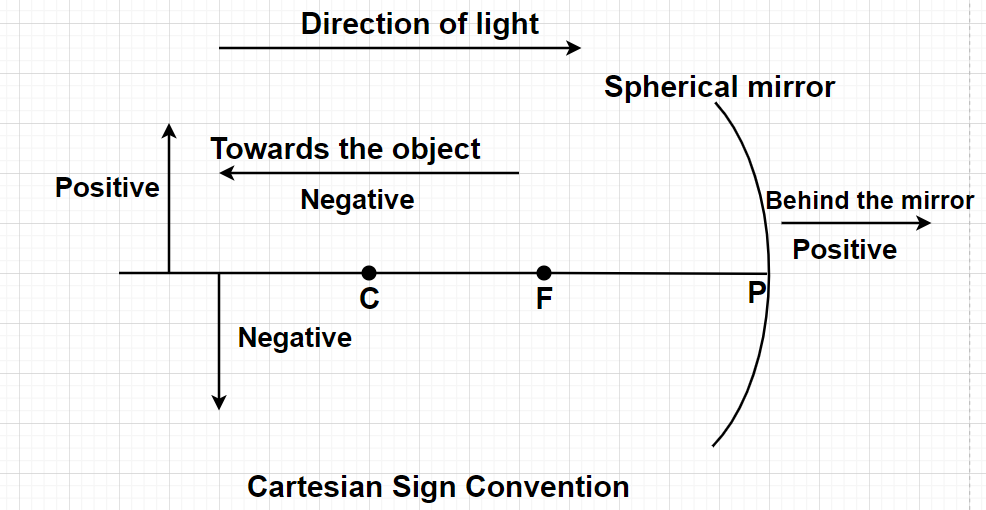
What is the Cartesian sign convention used for spherical mirrors?


Answer
521.7k+ views
2 likes
- Hint- Here, we will be drawing the sign diagram which will represent the sign according to the object’s position. Based on this sign diagram all the signs of the important parameters like radius of curvature, focal length, etc are determined.
Complete step-by-step solution -
Cartesian sign convention in case of concave mirror:
Cartesian sign convention in case of convex mirror:
Note- The focal point is defined as the point at which incoming light rays that are parallel to the principal axis would meet after reflection and the focal length is the perpendicular distance from the centre of the mirror to the focal point. The radius of curvature is defined as the radius of the sphere that would be produced if the mirror was made into a full sphere.
Complete step-by-step solution -
Cartesian sign convention in case of concave mirror:
Cartesian sign convention in case of convex mirror:
Note- The focal point is defined as the point at which incoming light rays that are parallel to the principal axis would meet after reflection and the focal length is the perpendicular distance from the centre of the mirror to the focal point. The radius of curvature is defined as the radius of the sphere that would be produced if the mirror was made into a full sphere.
Recently Updated Pages
Basicity of sulphurous acid and sulphuric acid are

Master Class 12 Economics: Engaging Questions & Answers for Success

Master Class 12 Maths: Engaging Questions & Answers for Success

Master Class 12 Biology: Engaging Questions & Answers for Success

Master Class 12 Physics: Engaging Questions & Answers for Success

Master Class 4 Maths: Engaging Questions & Answers for Success

Trending doubts
Give 10 examples of unisexual and bisexual flowers

Draw a labelled sketch of the human eye class 12 physics CBSE

a Tabulate the differences in the characteristics of class 12 chemistry CBSE

Differentiate between homogeneous and heterogeneous class 12 chemistry CBSE

Why is the cell called the structural and functional class 12 biology CBSE

Differentiate between insitu conservation and exsitu class 12 biology CBSE




